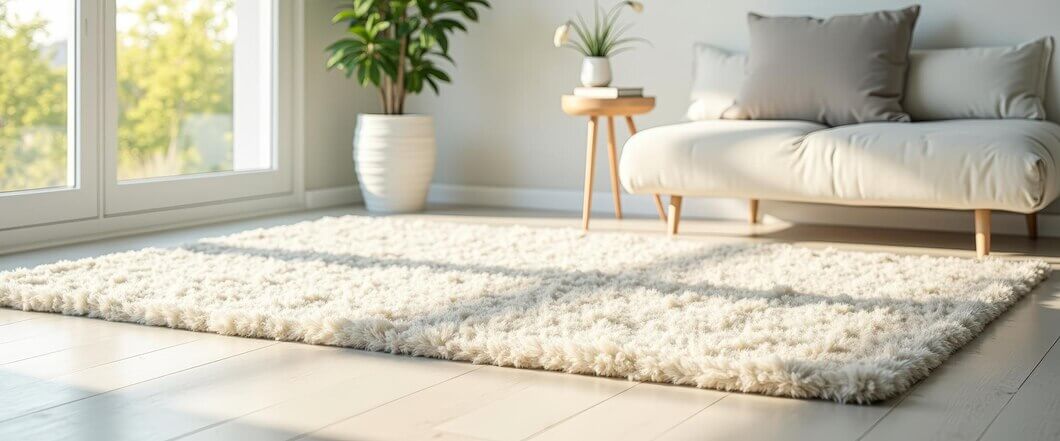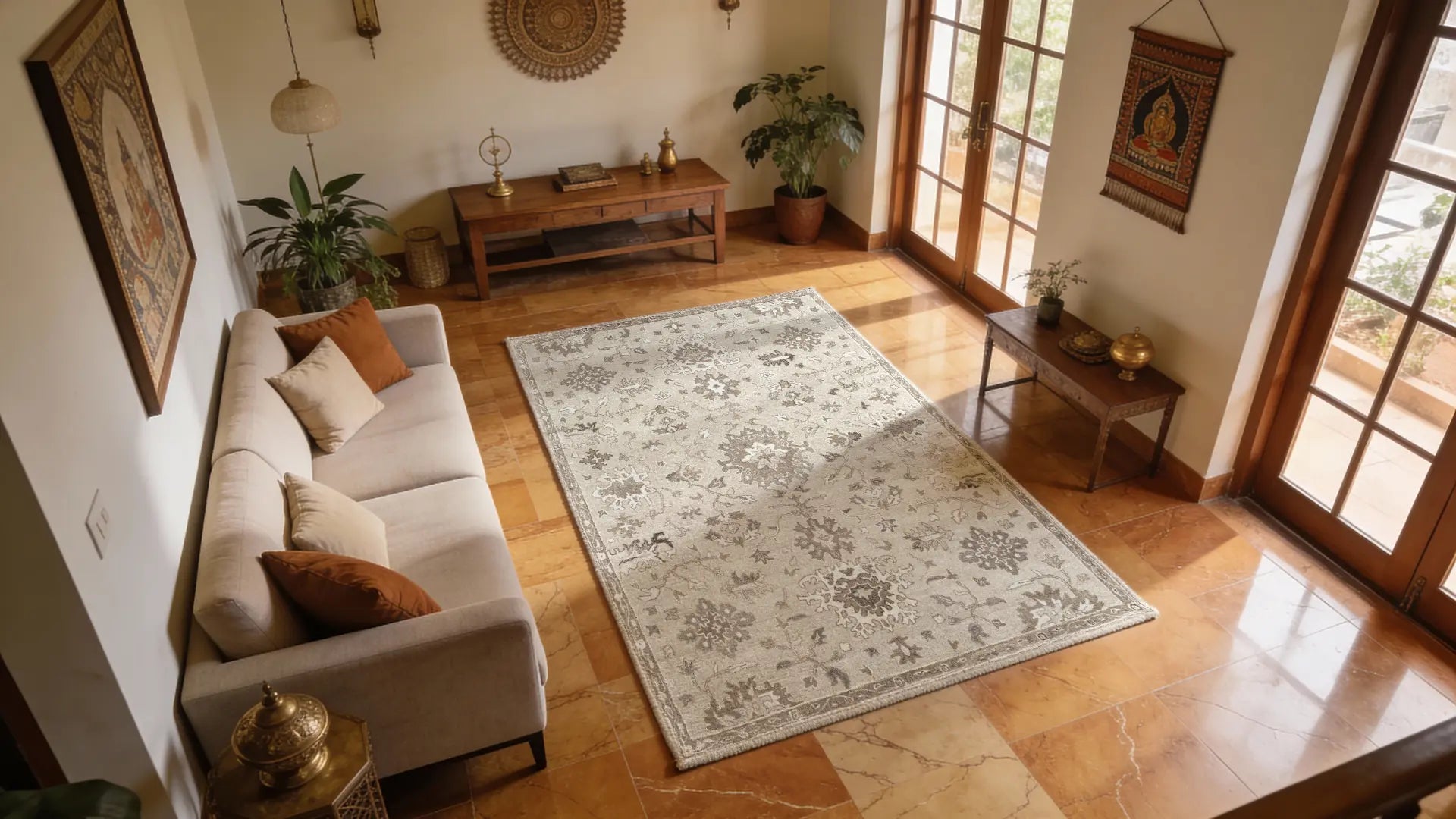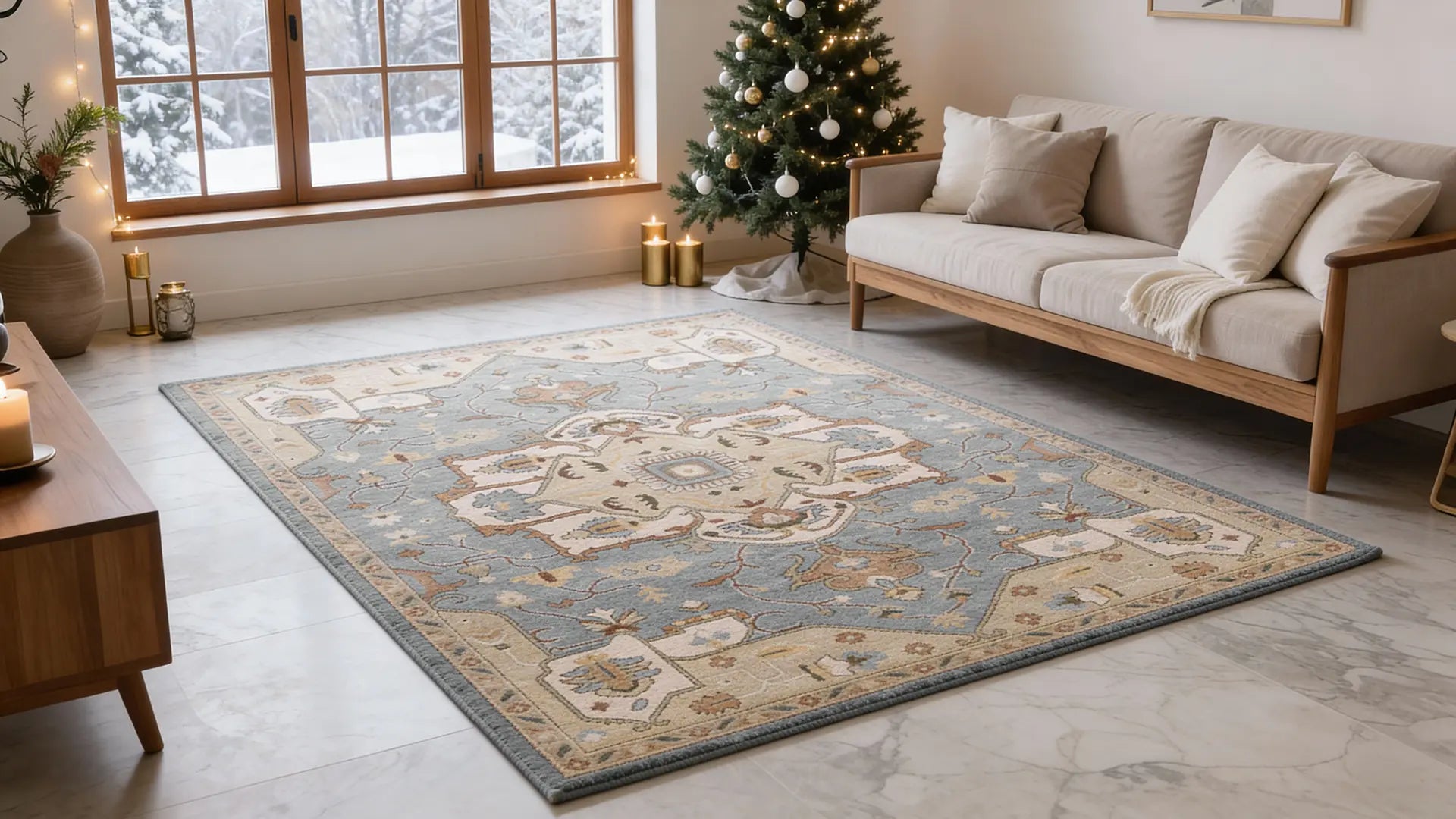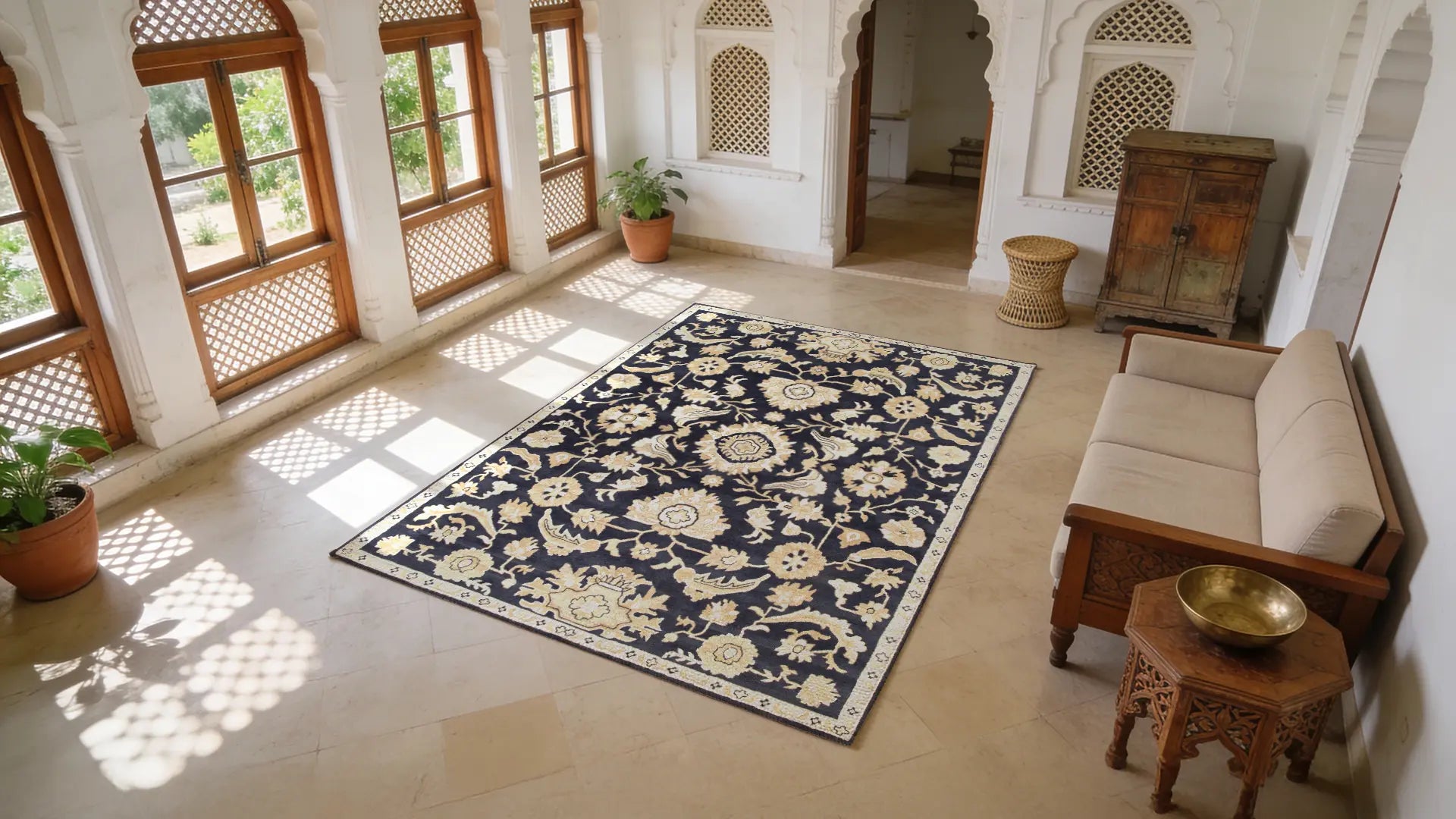Rugs are not just floor coverings; they add warmth, color, and texture to our homes. However, keeping them clean and well-maintained is essential if you want them to last. With the right care, rugs can stay beautiful and durable for years. In this rug guide, we’ll walk you through everything from basic rugs care to professional cleaning advice to keep your rugs looking their best.
Understanding Your Rug's Material
When it comes to rug care, recognizing the material is essential, as different fibers require specific cleaning methods. Not all rugs are created equal, and knowing what yours is made from can help you maintain its beauty and durability. Here’s a quick guide:
- Wool Rugs: Known for their durability and natural stain resistance, wool rugs are a great choice for high-traffic areas. However, they’re sensitive to harsh chemicals, so avoid strong cleaners and opt for mild solutions and gentle vacuuming.
- Synthetic Rugs: Made from materials like nylon or polyester, synthetic rugs are typically more stain-resistant and easier to clean, making them ideal for busy spaces or homes with pets. They can handle stronger cleaners but are best maintained with regular vacuuming and occasional spot cleaning.
- Silk Rugs: These rugs are luxurious but delicate and should be handled carefully. Silk fibers can be easily damaged by water and cleaning products, so it’s often best to have them cleaned professionally.
- Cotton Rugs: These lightweight, easy-to-clean rugs can often go in the washing machine, but frequent washing may cause fading. For longevity, use gentle cycles or hand-wash as needed.
Knowing your rug’s material helps you choose the best cleaning techniques and prevents unnecessary wear. Proper care ensures your rug stays vibrant and lasts for years.
Basic Rug Maintenance Tips

Proper and consistent care can greatly extend the life and appearance of your rug, keeping it looking fresh and vibrant for years to come. Here are some simple yet effective maintenance tips:
- Vacuum Regularly: Dust, dirt, and allergens accumulate over time and can settle deep into your rug’s fibers. Regular vacuuming not only helps keep your rug looking clean but also preserves its integrity. For low-pile rugs, it’s best to vacuum twice a week to remove surface dirt. If you have a delicate or high-pile rug, consider using a hand-held vacuum or adjusting your vacuum to a setting without a rotating brush to avoid damaging the fibers.
- Rotate Your Rug: Sunlight and foot traffic can cause uneven fading and wear on certain areas of your rug over time. To ensure even wear and keep colors consistent, rotate your rug every six months. This simple step distributes the effects of foot traffic and sunlight exposure, helping to maintain the rug’s original appearance.
- Use Rug Pads: Placing a rug pad underneath your rug not only provides additional cushioning but also reduces wear by preventing the rug from sliding or bunching. Rug pads help protect your floors and also make vacuuming easier by allowing more airflow under the rug.
Spot Cleaning and Stain Removal
Accidents happen, and quick action is key. Here’s how to tackle common stains:
- Blot, Don’t Rub: Using a clean cloth, gently blot the stain to absorb as much liquid as possible.
- Apply a Cleaning Solution: Use a mild solution (like water and a few drops of dish soap) and gently dab the stain. Avoid over-wetting.
- Rinse and Blot Dry: Use a damp cloth to rinse out any residue, then blot dry.
Dealing with Common Stains
- Pet Stains: Use an enzyme-based cleaner to break down odor-causing bacteria.
- Wine and Coffee: Blot up excess liquid, apply a mixture of water and white vinegar, and repeat as needed.
- Food Stains: Gently scrape off food, then spot-clean with dish soap and water.
Deep Cleaning Your Rug
Even with regular vacuuming, rugs need a deep clean once or twice a year:
- Shake and Dust: Take your rug outside, shake it, and give it a gentle beat to remove dust.
- Wash with Care: If your rug is machine-washable, follow the Rag care label. For non-machine-washable rugs, use a carpet shampoo and gently scrub, following the grain of the fibers.
Using DIY Cleaning Solutions
Some effective, homemade cleaning solutions can be both affordable and safe for your rug:
- Baking Soda and Vinegar: Ideal for deodorizing and lifting stains. Sprinkle baking soda over the rug, then spray vinegar. Let it fizz, then blot dry.
- Dish Soap and Water: A simple yet effective solution for minor stains.
Always spot-test DIY solutions on a small area first to ensure they don’t cause discoloration.
Professional Rug Cleaning Services

While home cleaning is effective, some rugs benefit from professional care, especially antique or high-value rugs. Professional cleaners use specialized equipment to deep clean without causing damage. Consider professional cleaning every 12 to 18 months, depending on rug traffic and material.
Drying Your Rug Properly
After cleaning, dry your rug thoroughly to prevent mold and odor. Air drying is best; hang the rug outdoors if possible. Avoid direct sunlight to prevent color fading.
Tips for High-Traffic Areas
Rugs in entryways, hallways, and other high-traffic zones are more prone to wear and tear, but with a few smart care practices, you can keep them looking their best for longer. Here are some essential tips:
- Place a Rug Pad: Adding a rug pad underneath provides extra cushioning, which not only feels softer underfoot but also helps reduce friction between the rug and floor. This simple addition can extend your rug’s lifespan by preventing early fraying and protecting the floor beneath.
- Vacuum Frequently: High-traffic areas accumulate more grit, dirt, and dust, which can get trapped in the rug fibers. Frequent vacuuming is essential to prevent these particles from breaking down the fibers, keeping your rug looking fresh and maintaining its texture.
- Rotate the Rug: If possible, rotate your rug every few months. This helps distribute wear more evenly across the surface, minimizing any visible signs of heavy use in one area.
- Spot Clean as Needed: Address spills or stains immediately to prevent them from settling. Use a mild cleaner suitable for your rug’s material to avoid damaging the fibers.
With these tips, you can keep rugs in high-traffic areas looking vibrant and durable, adding style and comfort to your home for years.
Preventing Rug Damage
Certain conditions can harm your rug, including:
- Sunlight: Prolonged exposure can cause colors to fade.
- Humidity: High humidity can lead to mold. Keep rugs in dry areas.
- Heavy Furniture: Use furniture coasters to prevent permanent indentations.
Using Rug Pads for Added Protection
Rug pads do more than just prevent slipping; they cushion the rug, reducing wear on the fibers and making vacuuming easier. Choose a rug pad that’s slightly smaller than your rug for a seamless look.
Storage Tips for Rugs

If you need to store your rug, start by giving it a thorough clean to remove any dust, dirt, or stains that could set over time. Once cleaned and completely dry, carefully roll the rug tightly, as folding can lead to creases. Wrap it in a breathable fabric, like cotton or muslin, which allows airflow and helps protect against dust and insects. Avoid plastic wraps, as they can trap moisture and lead to mildew.
Store the wrapped rug in a cool, dry place, ideally elevated off the ground to prevent dampness or pest damage. For added protection, consider placing a small sachet of lavender or cedar nearby to naturally deter moths. Following these steps will help preserve your rug’s color, texture, and quality while it’s in storage.
Handling Special Rugs: Antique and Oriental
Antique and Oriental rugs are valuable investments that need extra care. Avoid chemical cleaners, and consider professional cleaning every couple of years to preserve their beauty.
Read Also: The Ultimate Guide to Choosing Perfect Carpets for Your Home
Pet Owners’ Guide to Rug Maintenance
If you have pets, regular Carpets maintenance becomes essential:
- Use Enzyme Cleaners: These are excellent for removing pet odors.
- Brush Pets Regularly: This helps reduce shedding, which keeps your rug cleaner.
- Vacuum Often: More frequent vacuuming is key to managing pet hair and dander.
Conclusion
Maintaining a clean and beautiful rug doesn’t have to be overwhelming. With routine care, spot cleaning, and the occasional deep clean, your rugs will stay fresh and vibrant for years. From choosing the right cleaning solution to storing and handling special rugs, these tips will keep your rugs looking and feeling their best.












